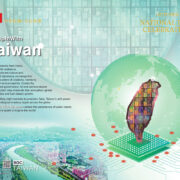Rethinking land reclamation for the people and the planet

Transforming urban spaces for competitive development has become a key strategy for developing countries to catch up with global superpowers such as the United States and China. In Southeast Asia, land reclamation serves as the primary solution for nations to create new land for development, boost local economies, and address the challenges of growing populations and rapid urbanization. Driven by global competitiveness and pressured by urban congestion, governments are prioritizing land reclamation projects to expand space for housing, infrastructure, businesses, and more.
But the outcomes of such projects show a stark divide: some support local communities and ecosystems, while others leave lasting negative impacts on both society and the environment. The Beemster Polder in the Netherlands and the reclamation of Manila Bay in the Philippines offer valuable insights into this cautionary tale.
Completed in the early 1600s, the Beemster Polder in the Netherlands stands as a prime example of what land reclamation can and should achieve. The project drained over 7,000 hectares of lake to create farmland and organized settlements, enhancing agricultural productivity while also preventing flooding in the region. Its success is attributed to exemplary planning, strong government support, and an innovative water management system, featuring well-organized windmills and canals that are still in use today.
The Beemster Polder was recognized as a Unesco World Heritage Site in 1999, and is lauded for its support for sustainable agriculture, local tourism, and biodiversity preservation. Revenues from tourism fund ecological conservation efforts, while local farmers implement environmentally friendly techniques to protect the land. The Beemster Polder proves that, when done right, land reclamation can have a positive impact: preserving both cultural and natural heritage, supporting livelihoods and settlements, and protecting the environment.
In contrast, Manila Bay’s past and ongoing reclamation efforts highlight the consequences of pursuing development at the expense of both people and the planet. In response to modern urban problems, such as overcrowding, rapid urbanization, and scarce land, the national government has greenlit around 20 reclamation projects, transforming the coastline under the guise of economic progress.
A harsh reality lies behind high-rise real estate developments and entertainment complexes: displaced communities, devastated ecosystems, and increasingly strong environmental hazards. In addition to losing their homes, fisherfolk, who are among society’s most vulnerable sectors, have also lost their source of livelihood and means of subsistence. Plans for relocation are often nonexistent, and compensation has been inadequate to support themselves and their families. Flood risks are exacerbated by so-called flood mitigation infrastructure, while pollution and land subsidence worsen.
These reclamation projects persist despite opposition from scientists, grassroots groups, and environmental advocates. The government’s willingness to expedite these developments by circumventing national conservation laws and environmental assessments is even more worrisome. While urban expansion and competitiveness are crucial to advancing the Philippines on the global stage, the Manila Bay case highlights the danger of prioritizing short-term profit over long-term well-being.
The Philippines does not need to abandon land reclamation projects altogether, but it does need to change the way that they are planned and executed. A shift toward community-driven planning, rigorous environmental assessments, and the enforcement of protective laws should be prioritized in these projects to ensure that development uplifts rather than uproots.
NINA D. RESURRECCION,
nina.d.resurreccion@gmail.com

















Diploma mill: Dismantling the broken system